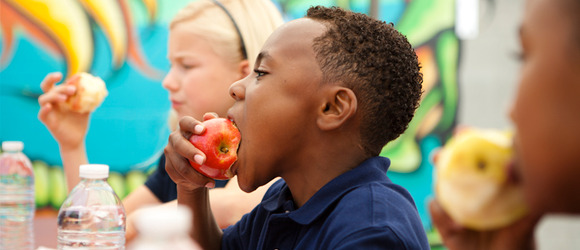
How to Pack a Healthy Lunch Your Kids Will Actually Eat
Getting kids to eat is tough at the best of times. But once they start school, things become even more challenging, as parents can’t monitor them at lunchtimes. Packing that healthy lunch may seem easy at first, but hopes of your little one getting a good dose of vitamins and protein are quickly dashed when she comes home with most of it uneaten.
Parents don’t have to give up by packing those boxes with unhealthy food just so their kids will eat. Many simple techniques can keep kids on the path of healthy eating, even when they are not under the watchful eye of Mom or Dad. Thinking about your child’s personality and how much time she has during the day to eat can help you plan lunches that keep her satiated at school.
Ask Their Opinion
When your child opens his lunch box, its contents shouldn’t be a surprise, except for a special note or word of encouragement you’ve tucked in with the meal. Children are more likely to eat food they have chosen or helped make. Involve your kids in lunch planning by giving them options. If your kid only likes a few healthy items, let her choose which one to pack with her every day.
Consider taking your children to the grocery store so they can identify new foods they want to try. You will have to set guidelines, of course, but letting each of your child pick any one fruit or one vegetable from the produce section can increase their food knowledge and, hopefully, their willingness to eat.
Rethink Whole Grains
You may find it easy to make your sandwich with whole grain bread instead of white, but that small change might turn off your child. Instead of giving up, try swapping out one slice of white bread for whole grain. It might be just enough to start to get kids used to the denser taste.
Try Healthy Dips
Consider healthy dips, like protein-packed hummus, as an alternative or a side to the sandwich. Bean dips like hummus give kids the health benefits of legumes, even if they prefer to eat it with crackers instead of vegetable pieces. Experiment with different combinations to see what your child prefers, or simply ask her during your lunch box planning.
Make It Bite-Sized
Kids are little people, and they can’t fit an entire apple or banana in their mouths. Your child may be a “grazer,” who takes a few bites of everything but never finishes one item. Make it easy for your child to eat by chopping up fruit or including items that are already bite-sized, like grapes or hard-boiled eggs.
Put pieces of items like apple in apple juice to prevent them from going brown. For a sugar-free option, use water in a tightly sealed container your child can’t spill.
Remember your child’s lunch break might be very short, as little as 20 minutes or a half hour. By the time she sits down and settles, she might not have time to finish all of his food, especially if she starts with a whole apple or banana and gets filled up. Imagine you’re eating an “on the go” lunch for yourself, and you’ll have an idea of what your little one probably experiences.
Add Flavor to Veggies
Use what you’ve learned about your kid’s likes and dislikes at other meal times to inspire your lunch box choices. Try serving items you could easily pack for lunch at dinner time and ask what she thinks. A combination of mashed chickpeas, sliced cucumbers, and feta cheese is delicious for most adults. If your child also enjoys the flavor combo, add it to his lunch box.
Treats: Love Instead of Sugar
You probably include a treat in your child’s lunch box, because you are a loving parent. But that treat need not be a piece of chocolate or candy. It can be a note written on the skin of a banana piece or on paper. It can also be a tasty treat you have made a home, like an oatmeal cookie. You don’t need to sacrifice your child’s health to make her feel special.
Be Patient With Yourself and Your Child
Your child will be in school for years, and that translates to a lot of school lunches. Take the time to get to know your child’s habits and the school’s schedule, and listen when your child gives feedback about why she didn’t eat a particular item. High-fiber foods can be filling. If she started with his sandwich, she might have just not been hungry enough to have his carrots.
You Can Do It!
By talking with your child and engaging her in the lunch-making process, you can increase his nutrition knowledge and up the chances she’ll finish what’s packed in his bag every day. Don’t be discouraged if you get unfinished food brought home. By making small changes, like swapping white bread for bean dips and whole grains and creating bite-sized meals, you’ll find a combination your child loves. At the end of the day, she’ll give you news that she had all the right ingredients to keep his energy up during his hours at school.
Related Articles
Let Us Guide You Through The Process of Finding and Hiring a Nanny
CanadianNanny.ca is Canada’s largest and most trusted online service for finding nannies and babysitters. We have been recognized by Today’s Parent, CanadaAM, the Globe & Mail, Reader’s Digest, Canadian Living Magazine, and many reputable parenting websites and publications across Canada.
Contact Us
Although we may be a self-serve nanny service, we are still very much devoted to helping families and caregivers succeed in their search for a match through our site. Our customer support team is always here and happy to offer any advice to our potential and existing customers.
